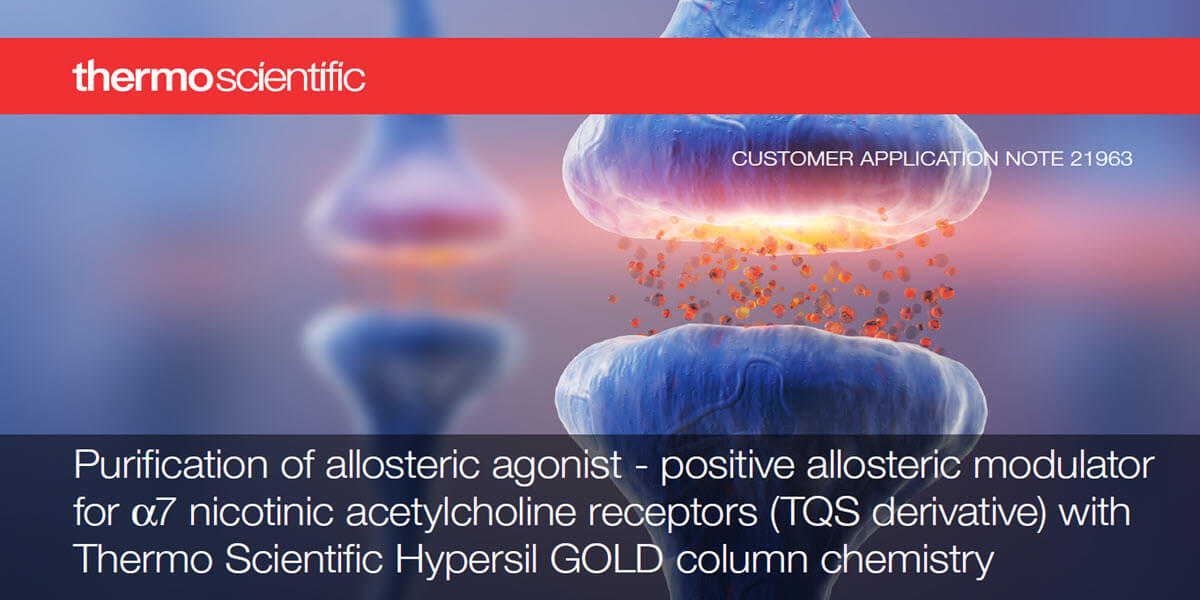Goal
Showcase a structured approach on how to achieve successful purification of synthetic, a7 nAChR, biological active compound for research and discovery. Presentation of an effective strategy and tools to accomplish high substance purity with minimized target substance loss.
Introduction
The general objective of COBRA (Chimie Organique Bioorganique Réactivité et Analyse, or translated - Organic and Bioorganic Chemistry, Reactions and Analysis) is to develop new innovative synthesis methods and apply them to the various sub-domains of the associated disciplines. The sub domains are bioorganic chemistry, pharmaceutical chemistry, environmentally sustainable chemistry, and material science related chemistry.

The bioorganic chemistry team from COBRA works on novel antidotes. Derived from research on Alzheimer’s disease1 where TQS, an a7 nicotinic acetylcholine receptor agonist, was found to be able to switch on deactivated receptors, the laboratory uses derivatives of TQS to pursue similar reactivation for individuals exposed to organophosphorus pesticides or warfare agents.
Organophosphorus pesticides are a serious public health issue worldwide with over 200,000 fatalities annually. Organophosphorus warfare agents present a persistent threat to the general population because of armed conflicts (e.g., Gulf War) and terrorist attacks (e.g., subway attacks in Japan in 1995). These compounds irreversibly inhibit acetylcholinesterase (AChE, EC 3.1.1.7), which plays an essential role in neurotransmission. Over the last 60 years, pyridinium oxime compounds have been widely used as antidotes to treat these intoxications.2 Despite decades of research in this field, there is no efficient and general reactivator for organophosphorus-inhibited AChE. Interest in this field has increased since the September 2001 terrorist attacks in the U.S.A. The important and recent advances in research on organophosphorusinhibited AChE is significant.





